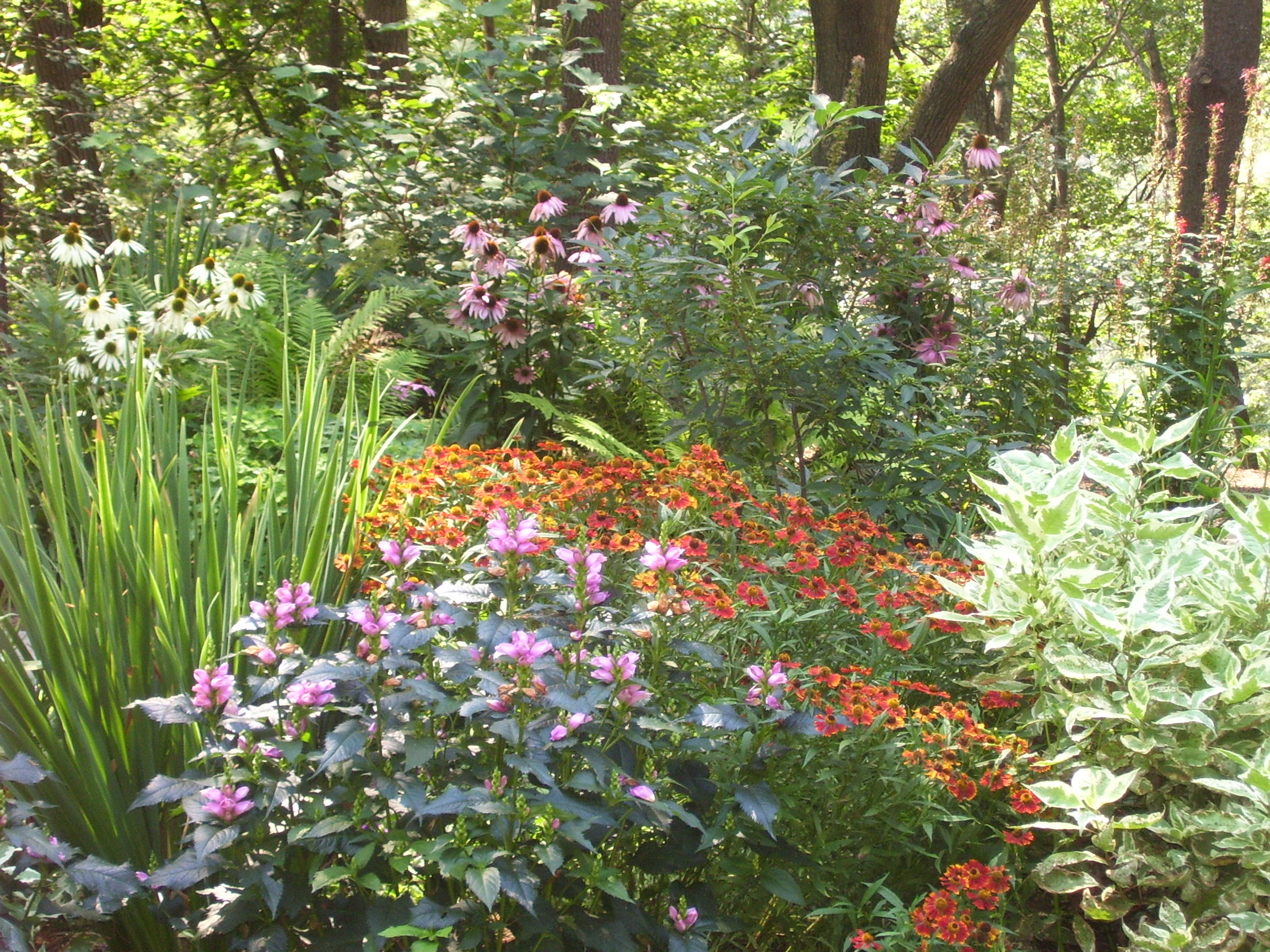I made my first trip of the season to Edge of the Woods Native Plant Nursery in Orefield, PA, with my daughter, April, and her three boys. What a wonderful place! They have over 300 species of trees, bushes, plants, flowers and ground covers, all native to this area. Louise and Susan, who own and run the place, are so knowledgeable and helpful that it is well worth the miles out of the way to shop there. But I get ahead of myself.
Why go native? The answer to that is manifold.
The Audubon Society is reporting a rapid decline in bird populations in America, by as much as 80% of some of the most common backyard birds since 1967. Ornithologists attribute this to the disappearance of natural habitat with suburban sprawl with its eradication of the native plant species on which these birds depend for food and shelter. Another problem is the use of chemical herbicides, insecticides and fertilizers that poison birds. So landscaping your yard with native plants and encouraging your neighbors to do the same can recreate attractive habitats for birds. There is no fauna without flora.
Native plants are well adapted to natural conditions, so do not require the artificial life support of chemical salt fertilizers or the ‘protection’ of weed killers or insecticides. This can save you money and make your habitat safer and less polluted. Choose your plants to match your conditions and you don’t need to water much, if at all. This saves water, which saves energy, which is better for the planet and your bank account.
It is easy to propagate most native plants, so, if you are willing to wait, you don’t have to buy so many. The Virginia Sweetspire that I planted last Fall has already put out rooted runners that I was able to transplant to a second location. These plants are not patented or copyrighted, so you can’t get into trouble for propagating them to plant, trade, give or sell.
If you have acreage, and you plan carefully, you can restore habitat to a wild enough state that it sustains itself with little care and provides habitat to native animals of all sorts. You cannot just stop mowing to let land return to the wild. In fact, mowing or plowing can permanently destroy some fragile natural ecosystems. In all of the Great Plains, some estimate that less than 2% are still virgin prairie. I recall as a child in Minnesota that they determined there was less than a quarter of an acre in the whole state that was still virgin prairie. Restoration can only go so far, but wouldn’t it be fun to closely restore a place to how it may have looked, felt and smelled like 400 years ago.
Going native will help you escape the cookie cutter, McMansion look. There are very interesting native plants in every region of the continent. As Europeans started to settle and explore the East coast of America, they were amazed with all the beautiful, native plants. In fact, one of the advantages of going native on the east coast of the US is that you can have a traditional, English, country garden! That’s right! The English were so taken with all the new, exotic plants from North America that they filled their gardens with them in a more naturalizing way than those stuffy, manicured French gardens. It’s a fascinating story. You can read about it in Andrea Wulf’s The Brother Gardeners.
We are using naturalizing, native ground covers, flowers and bushes to eliminate mowing in front of our house. We hope to be able to eat whatever blueberries the birds and the neighbors leave for us, as well.


